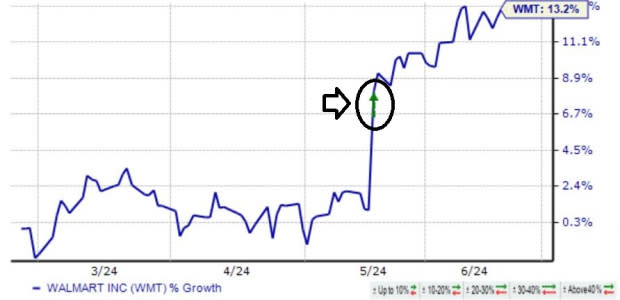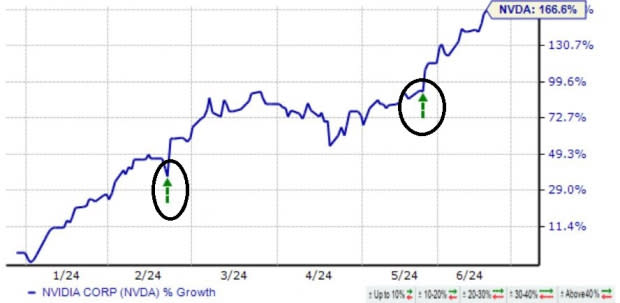Are Stock Splits a Buy Signal?
We’ve seen many notable splits in recent years, with companies aiming to increase liquidity within shares and erase barriers to entry for potential investors.
Lower share prices are more affordable for a greater portion of investors, although it’s worth noting that the rise of fractional share investing offered by many brokerages has alleviated this issue for some.
But why shouldn’t investors buy blindly into a split? Let’s take a closer look.
Splits are Just Cosmetic Changes
It’s vital to know that splits are purely cosmetic changes that do not affect a company's valuation. Splits increase the number of shares outstanding while reducing the share price proportionally, which leaves market caps unchanged.
The underlying business fundamentals also remain the exact same, with its financial health remaining unaltered. Splits shouldn’t be seen as buy signals but rather as a reflection of underlying company strength—splits are commonly announced when share prices become ‘steep,’ which results from strong underlying buying pressure for shares overall.
Rather, investors should focus on other aspects that truly drive share prices higher, including positive earnings estimate revisions, better-than-expected quarterly results, and strong sales growth.
Recent Splits
Retail giant Walmart WMT underwent a 3-for-1 split this year, with shares trading on a split-adjusted basis starting on February 26th. Walmart shares have gained 13% since the split, but the market-beating share performance has been driven by its latest set of quarterly results.
The green arrow circled below represents Walmart’s latest reporting date.

Image Source: Zacks Investment Research
Investor-favorite Nvidia NVDA also recently saw its shares split 10-for-1, with the announcement following its latest set of robust quarterly results. Nvidia’s Data Center sales have been the driver behind the share performance, which has caused analysts to positively revise their earnings expectations all over the past year.
Nvidia is a great example of fundamentals driving share performance. While the split can knock down barriers, it doesn’t reflect a meaningful change overall.

Image Source: Zacks Investment Research
Bottom Line
Splits are generally covered in positivity, as they allow a greater portion of investors to get in. While it’s a positive development, it’s critical to realize that splits aren’t an explicit buy signal, as investors should instead focus on underlying business fundamentals.
Want the latest recommendations from Zacks Investment Research? Today, you can download 7 Best Stocks for the Next 30 Days. Click to get this free report
Walmart Inc. (WMT) : Free Stock Analysis Report
NVIDIA Corporation (NVDA) : Free Stock Analysis Report

 雅虎香港財經
雅虎香港財經 